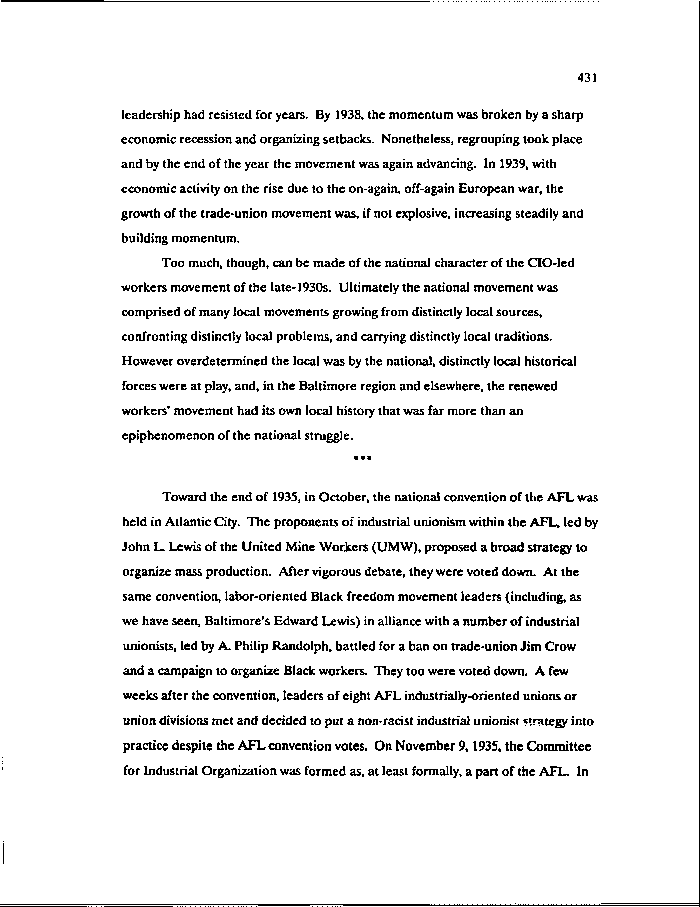|
431
leadership had resisted for years. By 1938, the momentum was broken by a sharp
economic recession and organizing setbacks. Nonetheless, regrouping took place
and by the end of the year the movement was again advancing. In 1939, with
economic activity on the rise due to the on-again, off-again European war, the
growth of the trade-union movement was, if not explosive, increasing steadily and
building momentum.
Too much, though, can be made of the national character of the ClO-led
workers movement of the late-1930s. Ultimately the national movement was
comprised of many local movements growing from distinctly local sources,
confronting distinctly local problems, and carrying distinctly local traditions.
However overdetermined the local was by the national, distinctly local historical
forces were at play, and, in the Baltimore region and elsewhere, the renewed
workers* movement had its own local history that was far more than an
epiphenomenon of the national struggle.
Toward the end of 1935, in October, the national convention of the AFL was
held in Atlantic City. The proponents of industrial unionism within the AFL, led by
John L. Lewis of the United Mine Workers (UMW), proposed a broad strategy to
organize mass production. After vigorous debate, they were voted down. At the
same convention, labor-oriented Black freedom movement leaders (including, as
we have seen, Baltimore's Edward Lewis) in alliance with a number of industrial
unionists, led by A. Philip Randolph, battled for a ban on trade-union Jim Crow
and a campaign to organize Black workers. They too were voted down. A few
weeks after the convention, leaders of eight AFL industrially-oriented unions or
union divisions met and decided to put a non-racist industrial unionist strategy into
practice despite the AFL convention votes. On November 9,1935, the Committee
for Industrial Organization was formed as, at least formally, a part of the AFL. In
|

